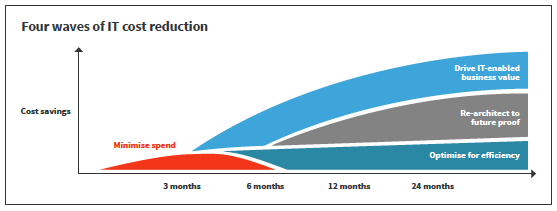Wouldn’t it be nice to have an IT budget that would expand as you needed it too?
Unfortunately, this is an unlikely scenario for most businesses, particularly small-to-medium-sized enterprises that typically have tight budgets attached to each area of their operations – which are set in stone for the next 12 months.
3 Steps to Determine What Your Business Needs
Step 1: Prioritize
List down what you want to achieve in your business and prioritize it. No “multiple” priorities are allowed. List them down, then assign a number from 1, with it being the highest.
Understanding what is important to your business, to help it operate efficiently and achieve growth, is the critical first step to finding the right level of services for the budget you have.
Read more: How much should you be spending on IT in 2020?
Step 2: Research
And next is about knowing what kind of technology is actually out there – as you may not have changed the way your business has done things in a long time, but new applications, hardware and software arrive on the market every day, and they might be just what you need to create greater efficiency (and in turn cost savings) in your day-to-day operations.
Research is vital to get a good understanding of what’s on offer. This may be done by searching online and speaking to different IT experts who cover a cross-section of capabilities.
And if you really want to ensure you are getting the best service for the budget you have, you need to compare services and have a good knowledge of what technology would suit your business.
Step 3: Align
Then, once you know what you need, it is easier to pinpoint those companies that can provide the service to you – and it will also give you a better ability to negotiate terms and cost.
Depending on how complex your organisation’s technology requirements are, you might also like to follow incorporate AccentureStrategy’s model for cost reduction;

Feeling overwhelmed? What might be an interesting comparison is looking into whether outsourcing your IT needs to one provider is actually more cost-effective than having to liaise and use a variety of suppliers.
You might be surprised that there are affordable options available, which means you can get expert advice from a single point of contact.
It is likely they will be able to offer special prices for hardware/software/internet and phone systems, and there will be significant savings in the amount of time you spend on managing these different aspects of technology in the business – don’t forget to value your billable hours. —- Keen to understand how benchmarking plays a part in setting IT budgets for businesses? Download: An essential guide to IT for SME business – Risk, Security and Productivity



